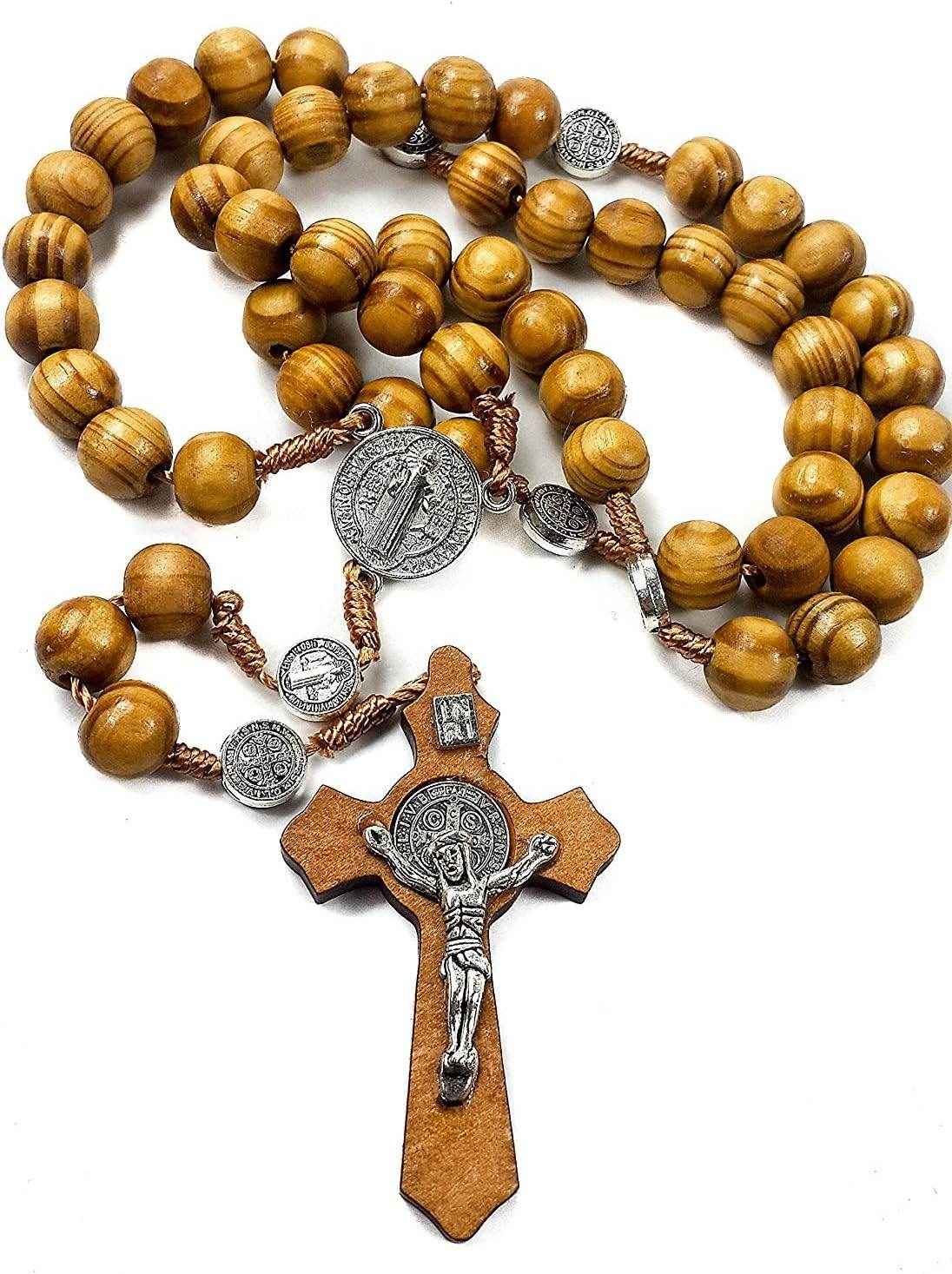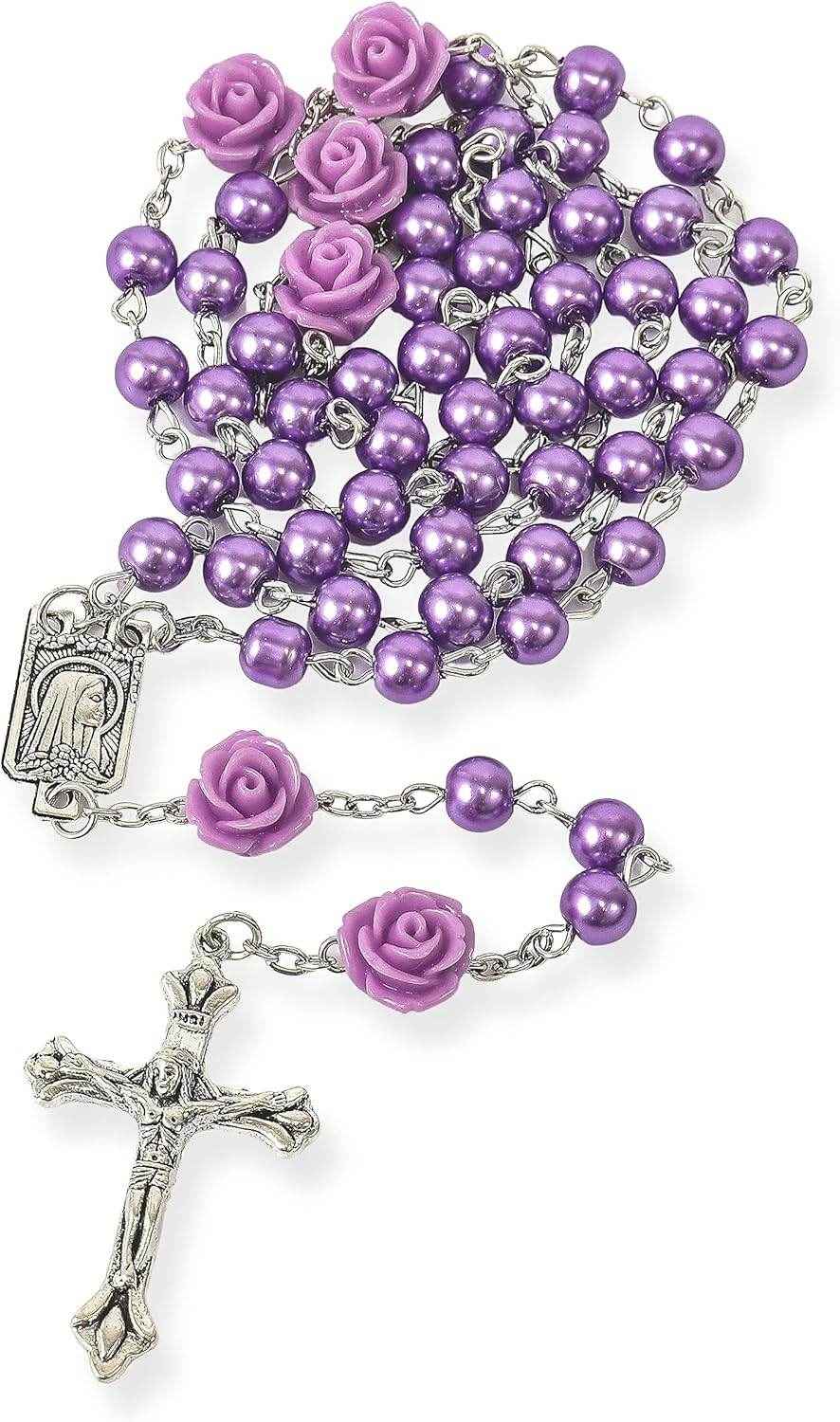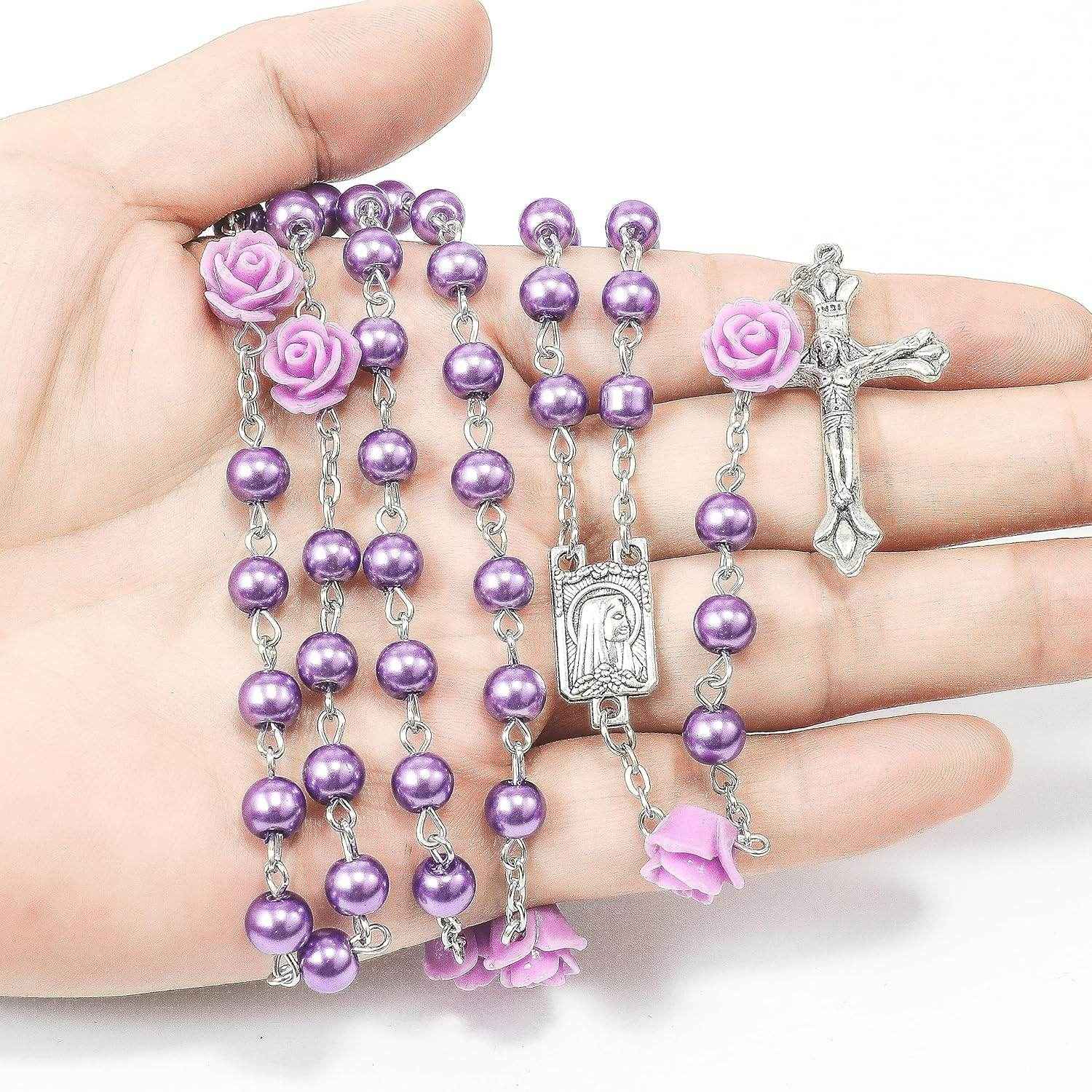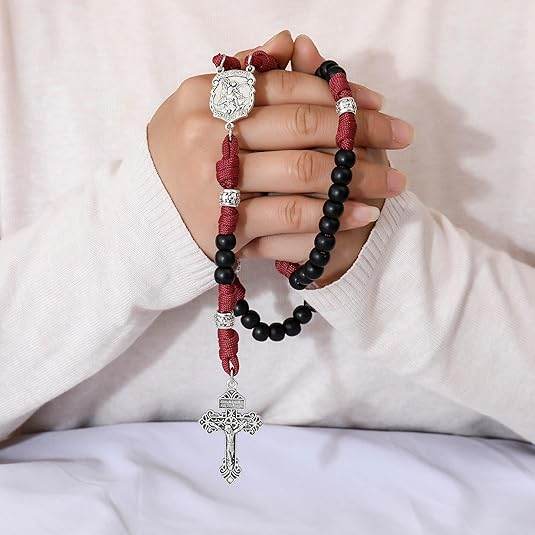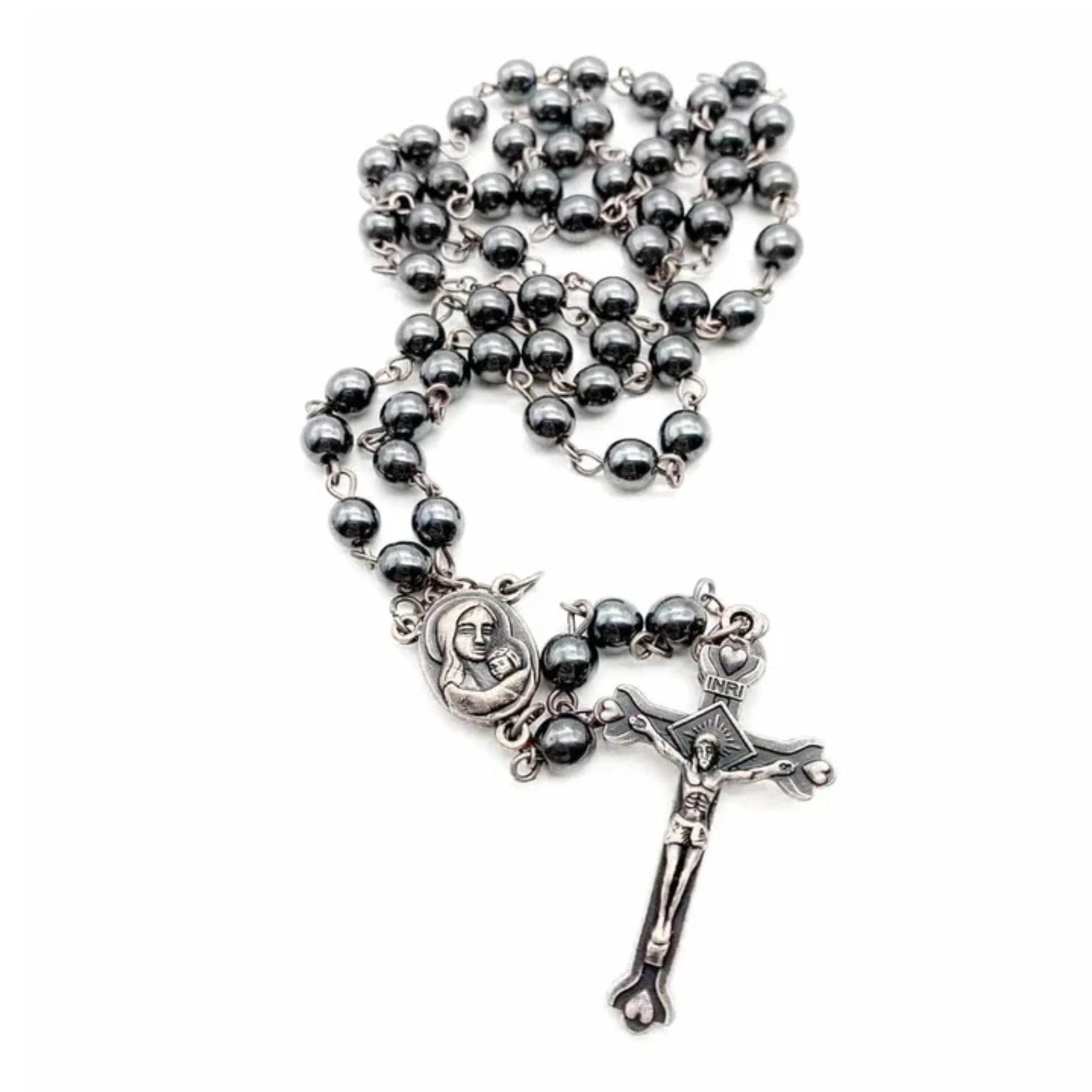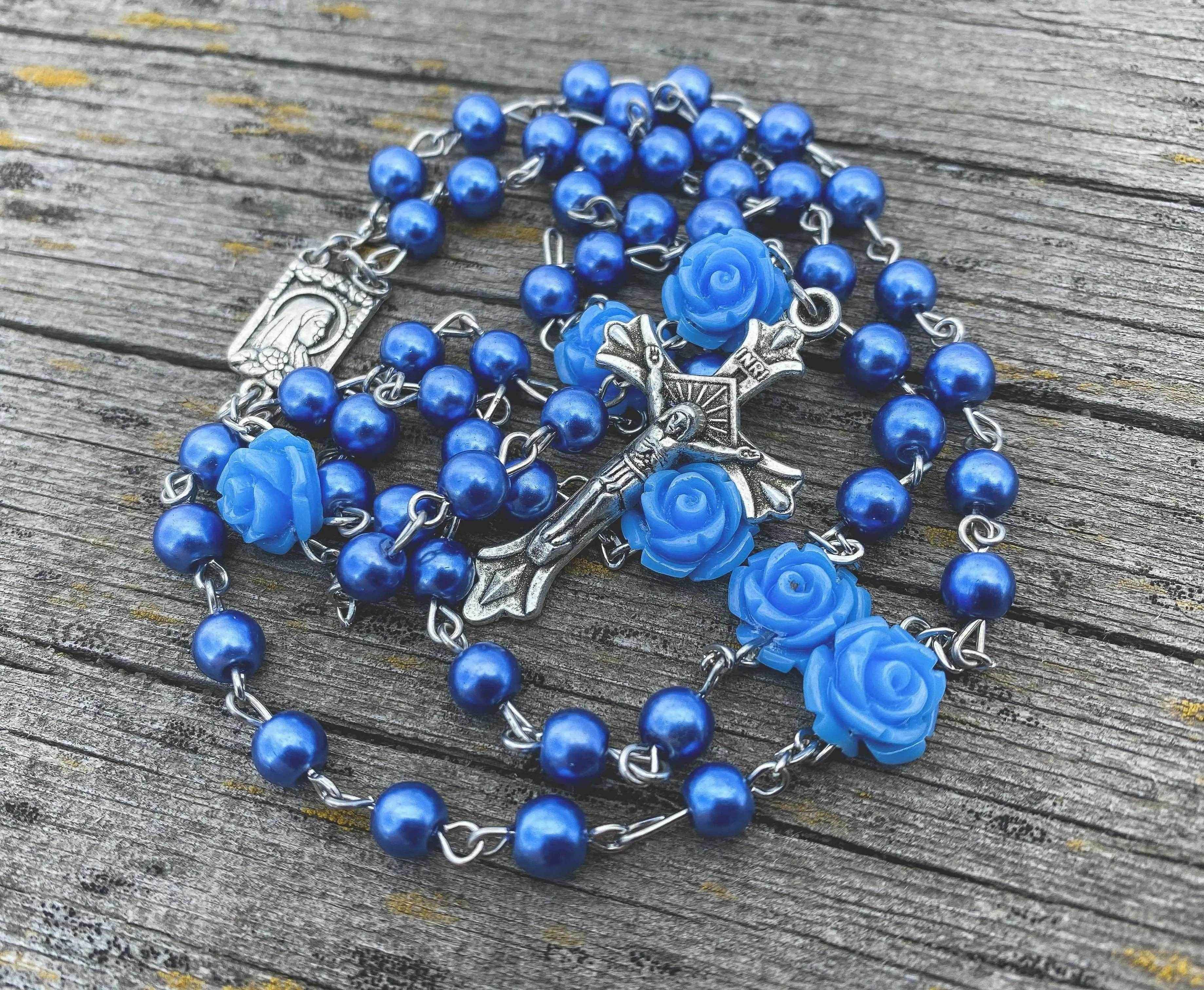Rosaries
Wooden Rosary Necklace Sacred St. Benedict Chaplet with Solid Wood & Metal Beads 20"
Saint Benedict Olive Wood Rosary Necklace
St. Michael Paracord Rosary Beads Rugged Rosary Necklace Strong Corded Catholic Pardon Crucifix
Purple Pearl Catholic Rosary Necklace Our Rose Lourdes Medal
Rose Petal Rosary Beads Red Rare Carved Beads & Silver Plated cross
Deep Blue Crystal Beads Rosary Necklace Holy Soil Medal and Cross
Crystal Beads Gold Flowers Beaded Rosary Necklace Miraculous Heart Locket Medal & Cross

WOMEN ROSARIES
Check Women Collection
Colorful Crystal Golden Beads Rosary Necklace with Miraculous Medal & Cross
Pink Pearl Beads Rosary Necklace Our Rose Lourdes Medal - Velvet Bag
St.Michael Black Beads Red Paracord Rosary Rugged Beaded Pardon Cross
St. Michael Paracord Rosary Beads Gun Black Metal Beaded Necklace for Men 20"
Catholic Turquoise Marble Rosary Necklace with Glass Beads & Miraculous Medal Cross
Saint Benedict Red Rosary Beads Enamel Cross Heart Shape Medal
Natural Jasper Stone Beads Rosary Necklace with Holy Soil Medal & Cross Crucifix
Black Hematite Rosary Stone Beads Handmade Chaplet Holy Soil Medal & Cross

MEN ROSARIES
Check Men Collection
St Benedict Rosary Wooden Beaded Chaplet Saint Medal & Cross
Antique Design Blue Crystal Beads Rosary Prayer Necklace Holy Soil Medal & Jesus Cross Crucifix
Black Hematite Rosary Necklace Natural Stone Beads Chaplet Velvet Bag
Colorful Crystal Beads Rosary Necklace with Miraculous Medal & Silver Cross Crucifix
Blue Rosary Pearl Beads Necklace Rose Lourdes Medal & Cross Crucifix
Turquoise Beads Rosary Catholic Necklace Miraculous Medal & Cross
Purple Pearl Beads Rosary Necklace Our Rose Holy Soil Medal - Velvet Bag







